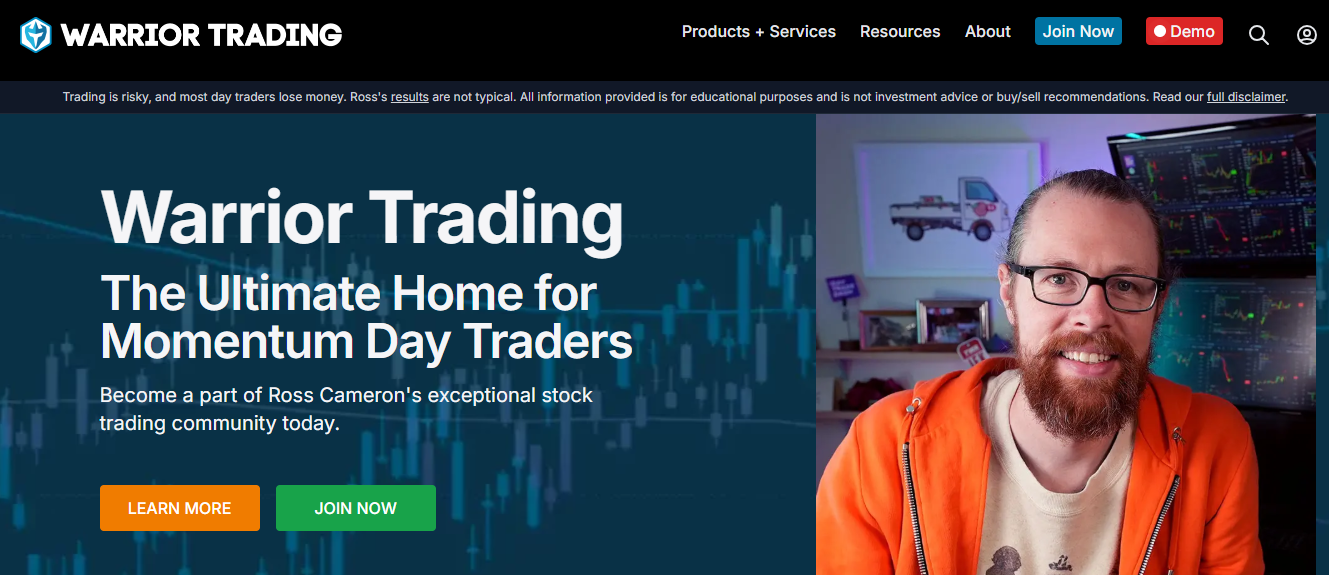10+ Profitable Trading Strategies You Must Try
Discover 10+ profitable trading strategies that can help boost your returns and minimize risk. Try these proven tactics today.

Picture this: you're watching the markets, trying to capitalize on the next big move. However, without the right approach, your chances can shift from promising to precarious in an instant. Profitable trading strategies are crucial to success, and within these innovative money methods, traders can find reliable ways to reach their financial goals. One powerful approach gaining traction among serious traders is Smart Money Trading—a strategy that focuses on tracking institutional order flow and understanding market manipulation tactics. This guide offers practical insights to help you maximize your trading potential and optimize your capital using proven techniques like Smart Money Trading.
For traders seeking to elevate their strategies, Aqua Funded's funded trading program can be a powerful tool. This program provides resources and support to enhance your trading abilities and help you achieve your objectives.
Is Trading Profitable?

The allure of day trading is strong, but the reality is harsh. Research consistently shows that most day traders ultimately lose money. Only about 10% find consistent success. A study from the University of California found that only 13% of day traders managed to earn a profit over six months. Another piece of research found that just 1% could reliably beat the market after factoring in costs. In essence, while making money through day trading is possible, it’s scarce and demands skill, discipline, and a solid strategy.
Day Trading Returns: Get Real About Expectations
Some traders aim to achieve double-digit returns every month. This is not realistic. Professionals in institutional settings typically aim for annual returns of 10% to 15%.
For retail day traders, consistently achieving even a 1% return per day is a daunting task. Theoretically, this would lead to over 250% returns annually, but sustaining this rate is almost impossible after considering costs, taxes, and the emotional wear and tear.
Trading Costs: The Hidden Drain on Your Profits
Even if you're good at trading, costs like commissions, spreads, and slippage can erode your returns significantly. Trading actively every day increases your exposure to these fees and the risk of losses from poor trade execution. These expenses often mean that traders with a knack for timing the market might still find themselves in the red.
Experience Helps—But Just a Little
A Taiwanese study found that only 5% of traders who studied for over 15 years were able to earn a profit. Among those trading frequently, just the top 1% were consistently profitable. While more experience can lead to slightly better outcomes, it doesn’t guarantee success. Merely spending time in the market isn’t enough.
Institutional vs. Retail: A Battle of Unequal Forces
Institutional traders have access to superior technology, faster execution, and greater capital. This gives them a significant edge over retail traders, who lack these resources. As a result, retail traders face a challenging path to long-term profitability.
Psychological Warfare: The Emotional Toll of Trading
Even with a good strategy, psychological factors such as overtrading, revenge trading, and fear can negatively impact your performance. Day trading is stressful, and emotional decisions often lead to losses. Success in trading requires not just skill and strategy, but also emotional discipline.
Survivorship Bias: The Silent Skew
You often hear about traders who make a lot of money, but not the countless others who fail and quit. This creates a false perception that trading is more profitable than it is.
Related Reading
- How Much Money Do You Need to Start Trading
- How Long Does It Take to Learn Trading
- What Challenges Do Traders Face?
- Futures vs Stocks Trading
- Why is Trading So Hard
- How to Swing Trade
- How to Multiply Your Money
- How to Start Trading With No Money
10+ Profitable Trading Strategies You Must Try

1. Scalping Strategy: Quick Gains in a Flash
Scalping is a rapid-fire strategy for those who thrive in the fast-paced world of day trading. By targeting small price changes, scalpers execute numerous trades to accumulate profits. They work on short-term time frames, typically the H1 timeframe, and focus on pairs like EUR/USD. The key indicators are Linear Weighted Moving Average (LWMA) and Trend Envelopes V2. A long position occurs when the price breaks the orange Trend Envelope line upward, the candlestick sits above the LWMA, and the DSS of momentum is green and above the signal line. Scalpers set tight stop-losses and take-profit levels to protect against sudden market shifts.
2. Position Trading: Riding the Waves
Position trading involves aligning with the primary trend to capture significant market moves over several days or weeks. Traders rely on daily charts to identify trends and hold positions through price fluctuations. The goal is to profit from large market movements without the stress of minute-by-minute monitoring. Position traders often employ trend-following strategies, with stop-losses set to protect gains from sudden reversals.
3. Swing Trading: Catching the Market’s Rhythm
Swing trading is similar to position trading, but it focuses on shorter-term price fluctuations. It involves identifying and trading the market's natural ebb and flow within the primary trend. Swing traders hold positions for several days or weeks, looking to profit from both upward and downward movements. They employ a range of strategies, including trend trading, counter-trend trading, momentum trading, and breakout trading, to identify and capitalize on price fluctuations.
4. Candlestick Strategy: Predicting Reversals
This strategy harnesses the power of candlestick patterns to predict reversals. It is typically used for position trading on the W1 timeframe with various currency pairs. A long trade is entered when the previous week’s bearish candlestick has a large body, indicating a potential reversal. A short trade is opened after a bullish candlestick with a large body. Traders set a stop-loss of 100–140 points and a take-profit of 50–70 points to protect against market volatility.
5. Day Trading: Seizing the Day
Day trading is all about making quick trades to capture intraday price movements. Day traders open and close positions within the same trading day, often making multiple trades to capitalize on price fluctuations. They utilize technical analysis and indicators, such as RSI, MACD, and the Stochastic Oscillator, to identify market conditions and make informed trading decisions. The goal is to be "flat," or out of all positions, by the end of the day, to avoid overnight risk.
6. Parabolic Trading Strategy: Following the Trend
This strategy combines EMAs and Parabolic SAR to confirm trends and find entry points. A long position is opened when the red EMA (5) crosses the yellow EMAs (25 and 50) from below, and the Parabolic SAR is below the candlesticks. A short trade is entered when the red EMA (5) crosses the yellow EMAs from above, and the Parabolic SAR is above the candlesticks. The strategy is designed to capture trend reversals and ride the new trend for profit.
7. Price Action Trading: Reading the Market
Price action trading is about interpreting the market's natural movements to identify trends and patterns. Traders use a variety of strategies to analyze these movements and make informed trading decisions. They focus on the dominant price action on their chosen time frame and enter trades in the direction of the trend or pattern. This strategy is flexible and can be adapted to different market conditions and time frames.
8. Algorithmic Trading: Automating Success
Algorithmic trading uses computer models to execute trades automatically based on a set of predefined rules. The objective is to generate buy or sell signals and determine entry and exit points with minimal human intervention. Traders define and refine regulations as needed to improve performance. This strategy is ideal for those who want to capitalize on market conditions without being tied to their screens.
9. Trend Trading: Following the Flow
Trend trading is a strategy that involves identifying and following the market’s direction to capture profit opportunities. Traders seek to enter positions in the direction of the trend and hold them until the trend shows signs of reversal. They rely on tools like moving averages, trendlines, and the Average Directional Index (ADX) to confirm the trend's direction and strength. Entry points are typically based on pullbacks or breakouts within the trend.
10. News Trading: Profit from Events
News trading is about using fundamental events to inform trading decisions. Traders identify key events, such as economic data releases or earnings reports, that could impact the market and plan their trades accordingly. The goal is to profit from price changes before, during, or after the event. News traders must be quick and decisive to capitalize on market volatility and avoid being caught off guard by sudden price swings.
11. Range Trading: Bouncing Between Support and Resistance
Range trading is a strategy that involves identifying securities trading between two prices and buying at the support level while selling at the resistance level. Traders use oscillators like the RSI and Stochastic to identify overbought and oversold conditions within a specific range. They also watch for volume changes and other signs of potential breakouts. Range trading is best suited for markets that lack a clear long-term trend and instead move within a bounded range.
At AquaFunded, we offer a funded trading program that lets you profit from your trading skills without risking your capital. With accounts up to $400K and flexible trading conditions, we provide the support you need to succeed. Join our community of traders today and start earning with confidence.
25 Tips for Trading Like a Pro

1. Leverage AquaFunded Without Risking Your Capital
AquaFunded is an advanced tool for traders looking to maximize their potential. With access to accounts up to $400,000, you can turn your trading skills into substantial profits without risking your own money. AquaFunded offers some of the most flexible trading conditions in the industry, including no time limits, easy profit targets, and a profit split of up to 100%. Over 42,000 traders worldwide have already collected more than $2.9 million in rewards, backed by a 48-hour payment guarantee. Start trading today with instant funding options or prove your skills through customizable challenge paths and keep up to 100% of what you earn.
2. Master the Basics of Trading
Understanding the basics of trading is essential for gaining entry-level knowledge that can guide you throughout your career. These fundamentals are factual, data-driven, and process-based, but may vary slightly depending on the source. Multiple sources provide a range of understanding for what is currently successful in the field.
Consider consulting books on trading, reputable trading websites, or the experiences of successful traders for advice. You can also access training materials and educational resources from stock exchanges on their websites. Learning these basics can help you decide which investment products to trade.
3. Stick to Your Discipline
Discipline is a key element of successful trading that cannot be taught in a seminar or found in expensive trading software. Traders spend thousands of dollars trying to compensate for their lack of self-control, but few realize that a long look in the mirror accomplishes the same task at a much lower price. Once you have confidence in your trading plan, you must have the discipline to stay the course, even during inevitable losing streaks.
4. Learn Advanced Trading Basics
Decide which products to trade, such as futures, options, or stocks, and understand the advanced basics of that specialty. This information is more specific than general trading information and may allow you to become an expert over time. Use books, internet sources, and mentors to learn the niche markets of your choice.
5. Avoid the Crowd
Long-term profitability requires positioning ahead of or behind the crowd but never in it. Staying away from stock boards and chat rooms, where people are less severe and many have ulterior motives, can help you avoid being targeted by predatory strategies.
6. Manage Your Emotions
All traders experience both good and bad days. Professional traders know this and avoid getting upset or discouraged during a bad day; equally, they avoid getting carried away with enthusiasm during a good day. Deal with your emotions now before they catch you by surprise and hijack your thinking.
7. Develop Trading Systems and Techniques
Developing trading techniques and systems can help you discover the most logical and practical ways to make a profit in your market. Unlike basics, trading strategies may be subjective; it's vital to find trustworthy sources of information that provide charts and examples of how their strategies work over months or years. Note those that seem profitable in your real-world situation.
8. Engage Your Trading Plan
Update your trading plan on a weekly or monthly basis to incorporate new ideas and eliminate outdated ones. Go back and read the plan whenever you're stuck and looking for a way out.
9. Know When to Be Patient
In some situations, patience is crucial. Rushing to complete a trade can work against you, especially when dealing with large orders or volatile markets. Trust your analysis and allow the market to come to you.
10. Gain Trading Experience
Making trades in a real market may help you improve your theoretical techniques. The goal when implementing a new system isn't to win every trade or be perfect, but to be profitable and consistent. Testing and revising your theories over time can help achieve this.
11. Don't Cut Corners
Your competition spends hundreds of hours perfecting strategies. The only way to achieve long-term success is with hard work and discipline; expecting to throw a few darts and walk away with a profit is unrealistic.
12. Plan for Different Scenarios
For pre-timed events, such as company results or GDP announcements, professional traders prepare for various scenarios with plans A, B, C, and so on. They may pre-load orders onto their trading systems to react quickly when the time comes and beat the rest of the market.
13. Consider Paper Trading.
Many trading platforms offer a feature called paper trading, allowing you to practice your strategy in a true-to-life market environment using pretend money. Though you won't make a real profit, you can determine which components of your plan are solid enough for real trades.
14. Avoid the Obvious
Profits rarely come from following the majority or crowd. When you see a perfect trade setup, everyone else likely sees it too, planting you in the crowd and setting you up for failure.
15. Analyze Trades from Different Angles
Professional traders consider both macro and micro factors, examining the economy, sector, company fundamentals, technical analysis, order flow, price charts, and news flow, among other factors. The more favorable factors there are, the more likely they are to take action.
16. Choose a Reliable Broker
You can attribute some of your trading success to choosing the right broker to facilitate your investments. A brokerage firm connects traders to sellers and facilitates the deal-making process. Picking a broker that deals in or specializes in your niche may help you find and secure better deals.
17. Avoid Market Gurus
It's your money at stake, not theirs. Keep in mind that a guru might be exaggerating their claims, hoping the excited chatter will increase profits, not yours.
18. Think Three to Four Steps Ahead
Professional traders think several moves ahead. If there's a report about a company doing well, they don't just rush to buy the stock. They stop and think about second-or third-order effects, the impact of this news.
19. Learn to Focus
Professional traders focus intensely on tasks when buying and selling investments. They block out distractions or set up workstations to display only necessary information. Train yourself to focus by practicing meditation or other techniques, minimizing distractions, or using focus apps.
20. Use Your Intuition
Trading uses both the mathematical and artistic sides of your brain. Once comfortable with math, enhance results with meditation, a few yoga postures, or a quiet walk in the park.
21. Look for Hedging Opportunities
Professional traders hedge their trades whenever possible. If you've conducted an analysis and believe a stock is undervalued, consider hedging to protect against market or sector risks. This can allow you to take a larger position in the stock.
22. Understand Risk Management
Risk management involves understanding potential threats to your trades and creating strategies to avoid them. For traders, this can help determine which markets and moves are best, when to buy and sell, and how to predict trends to stay profitable.
23. Don't Try to Get Even
Drawdowns are natural in trading. Accept them gracefully and stick to time-tested strategies to get performance back on track. Don't try to make up for losing trades by trading more; revenge trading is a recipe for disaster.
24. Tools Don't Think
Some traders rely on expensive software with proprietary signals to compensate for insufficient skills. These tools can interfere with valuable experiences if you think they're smarter than you are. Use tools that fit your plan, but remember you're the one calling the shots.
25. Keep a Trading Journal
Keeping track of your trades can help you make logical decisions or adjustments to your strategy. Consider starting a trading journal where you record metrics such as date, time, setup, market, lot size, long or short position, tick value, entry price, exit price, stop-loss, profit and loss, and initial risk.
10 Best Courses to Learn Trading
1. AquaFunded: Leverage Your Trading Skills

AquaFunded empowers traders by offering access to substantial capital of up to $ 400,000 without requiring personal funds. With flexible trading conditions, including no time limits and easy profit targets, this platform allows traders to retain up to 100% of their earnings. It serves over 42,000 traders globally, with more than $2.9 million in rewards distributed to them. Options include instant funding or customizable challenges, all backed by a 48-hour payment guarantee.
2. Yale's Financial Markets Course: Understanding the Core

Yale University’s Financial Markets course on Coursera is an essential starting point for traders. Taught by Nobel laureate Robert Shiller, the course examines how financial markets function through the use of historical examples. Students gain insights into risk diversification, behavioral finance, and market psychology. It’s essential for understanding the market’s fundamental workings before moving on to advanced strategies.
3. Warrior Trading: Comprehensive Day Trading Education

Warrior Trading offers an in-depth course on day trading strategies and scaling. With over 100 hours of video content and live presentations, it’s a top choice for those looking to master day trading. The course covers everything from basic strategies to advanced techniques, providing a thorough understanding of day trading dynamics.
4. Udemy’s Foundation Course: Practical Trading Skills

The Complete Foundation Stock Trading Course on Udemy focuses on practical trading skills. With an emphasis on technical analysis and execution, this course teaches essential trading tools and strategies that are crucial for successful trading. Students learn about the mechanics of the stock market, risk management, and trading psychology, gaining the knowledge necessary to trade effectively.
5. Beginners’ Guide: Starting from Scratch

Udemy’s Stock Market from Scratch for Complete Beginners is ideal for those new to trading. The course starts with the basics, making no assumptions about prior knowledge. It’s an excellent way to learn the fundamentals of trading and investing, offering great value, especially when purchased at a discount.
6. Advanced Stock Trading: Taking It to the Next Level

Mohsen Hassan’s Advanced Stock Trading Course on Udemy is aimed at those ready to tackle more sophisticated trading techniques. The course strikes a balance between theory and practice, examining market microstructure, company fundamentals, and macroeconomic factors. It also teaches specific trading strategies and plan development for various market conditions.
7. Free Trading Education: Charles Schwab

Charles Schwab offers an extensive collection of free trading and investing education. The content is accessible to anyone, not just Schwab clients, and covers a wide range of financial instruments. Constantly updated, this resource is invaluable for understanding stocks, bonds, options, and futures.
8. Humbled Trader: Learning from Experience

The Humbled Trader YouTube channel provides free day trading education with a balanced approach. Shay, the creator, offers insights into the realities of day trading, sharing both successes and failures. The channel covers day trading fundamentals, risk management, and trading psychology, making complex topics accessible and engaging.
9. Trading Psychology: Mastering the Mind

The London Academy of Trading’s Trading Psychology Workshop focuses on the often-overlooked mental aspect of trading. This course combines fundamental and technical trading knowledge with psychology, enabling traders to manage their mindset and emotions effectively. It’s a valuable resource for understanding the psychological challenges of trading.
10. Forex for Beginners: A Practical Approach

Udemy’s Best Forex Trading for Beginners course provides a hands-on introduction to currency trading. Instructor Kirill Eremenko uses live trades to teach forex fundamentals, making complex concepts easy to understand. The course covers everything from setting up a broker account to executing orders and managing risk effectively.
Related Reading
- What Happens if You Blow a Funded Account
- How to Become a Professional Trader
- Best Market to Trade for Beginners
- Tips for Day Trading
- Common Trading Mistakes
- Margin vs Leverage
- How Much Can You Make Day Trading With 100k
- Scalping Trading Strategy
- Margin vs Leverage
- Day Trading vs Options
- Best Time Frame for Day Trading
Join Our Funded Trading Program Today - Trade with our Capital and Keep up to 100% of the Profit.
Consider trading without the anxiety of losing your own money. AquaFunded makes this possible by providing traders with accounts of up to $ 400,000. There’s no need to invest your capital, and you still reap the rewards. Traditional trading means risking your funds, but AquaFunded flips the script. With the right strategies, you can start earning profits without any upfront risk. This approach is perfect for experienced traders who want to leverage their skills without financial stress. It’s a win-win, where you focus on honing your trading strategies while AquaFunded manages the risk.
Enjoy the Most Flexible Trading Conditions in the Industry
AquaFunded sets itself apart with incredibly trader-friendly conditions. Forget about tight deadlines and impossible profit targets. With flexible trading conditions, you can focus on what truly matters: making successful trades. This means you have the freedom to optimize your strategies and adapt to market conditions without feeling pressured. It’s a breath of fresh air in an industry often marred by rigid rules that hinder performance. And with the potential for up to 100% profit split, you’re incentivized to fine-tune your approach, knowing you’ll keep the majority of your earnings.
Join a Global Community of Successful Traders
AquaFunded boasts a community of over 42,000 traders who’ve collectively earned more than $2.9 million in rewards. This isn’t just a statistic; it’s a testament to the platform’s effectiveness and the potential it offers to traders worldwide. Being part of this thriving community means learning from others, sharing strategies, and growing together as a collective. It’s an environment that fosters success, where traders can exchange ideas and insights. The camaraderie and shared experiences are invaluable, offering support and motivation as you pursue your trading goals.
Experience Fast and Reliable Payouts
One of the standout features of AquaFunded is its 48-hour payment guarantee. When you make a profit, you want access to your earnings quickly. AquaFunded understands this and ensures that you receive your payouts promptly. This reliability builds trust, reassuring traders that their hard work will be rewarded without delay. It’s a crucial aspect of the trading process, allowing you to reinvest your profits or use them as you see fit. Quick payouts mean you can focus on what you do best: trading.
Choose Your Path to Success with Multiple Funding Options
AquaFunded offers multiple paths to success, catering to traders of all skill levels and experience. Whether you prefer instant funding or want to prove your skills through customizable challenges, AquaFunded has you covered. Instant financing is ideal for experienced traders who are ready to start earning immediately.
On the other hand, the challenge path enables traders to showcase their skills and earn rewards for their efforts. Both options offer the opportunity to earn up to 100% of your profits, providing you with the flexibility to choose the approach that best suits your needs.
Related Reading
- Why Do Most Day Traders Fail
- Is Day Trading Profitable
- How to Take Profits in Trading
- Fair Value Gap Trading
- Best Time of Day to Trade Stocks
- How to Make Money Online Trading
- Prop Firms With No Time Limit
- Different Stock Trading Strategies
- Swing Trading Prop Firms
- Best Technical Indicators for Day Trading


